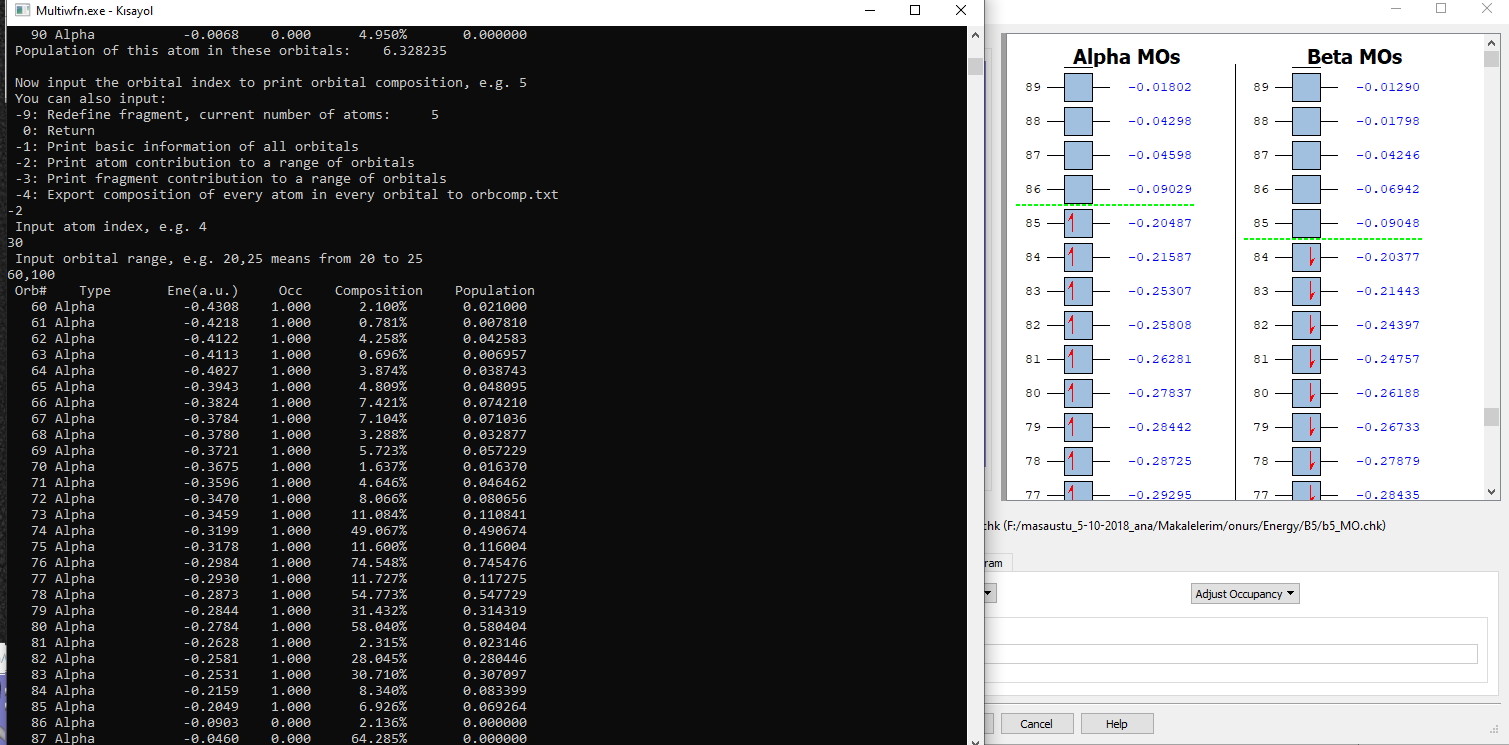Best Wishes]]>
...
Atoms: 3, Basis functions: 19, GTFs: 36
Total energy: -76.125434181439 Hartree, Virial ratio: 1.99965469
This is an unrestricted single-determinant wavefunction
Orbitals from 1 to 19 are alpha, from 1 to 6 are occupied
Orbitals from 20 to 38 are beta, from 20 to 23 are occupiedIn addition, if you enter main function 0 and select "Show all" in "Orbital info." in menu bar, you can see e.g.
1 E(au/eV): -19.33565 -526.1498 Occ: 1.000000 Typ: A
2 E(au/eV): -1.18124 -32.1433 Occ: 1.000000 Typ: A
3 E(au/eV): -0.66585 -18.1187 Occ: 1.000000 Typ: A
4 E(au/eV): -0.53474 -14.5510 Occ: 1.000000 Typ: A
5 E(au/eV): -0.53146 -14.4618 Occ: 1.000000 Typ: A
6 E(au/eV): -0.06039 -1.6432 Occ: 1.000000 Typ: A
7 E(au/eV): 0.07290 1.9838 Occ: 0.000000 Typ: A
8 E(au/eV): 0.71656 19.4986 Occ: 0.000000 Typ: A
...
20 ( 1) E(au/eV): -19.30115 -525.2110 Occ: 1.000000 Typ: B
21 ( 2) E(au/eV): -1.09028 -29.6680 Occ: 1.000000 Typ: B
22 ( 3) E(au/eV): -0.63075 -17.1635 Occ: 1.000000 Typ: B
23 ( 4) E(au/eV): -0.48896 -13.3051 Occ: 1.000000 Typ: B
...As you can see, in this example the beta orbital 3 corresponds to total index of 22. Therefore, if you want to examine orbital composition of 3, you should input 22.
]]>Can you help with this? What should I do to make beta orbitals appear at the end of the calculation?]]>

